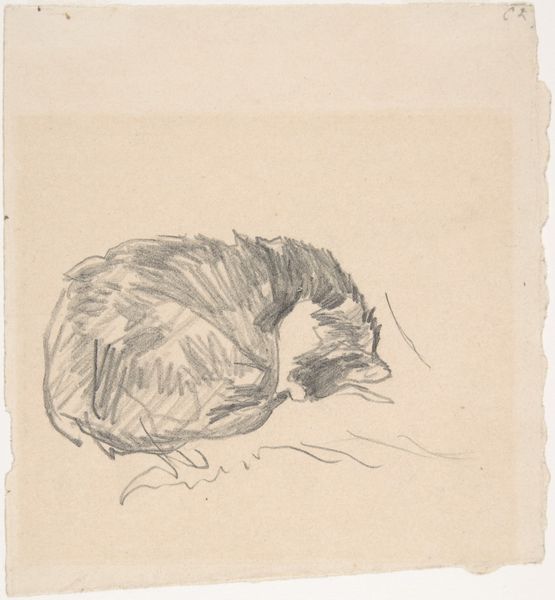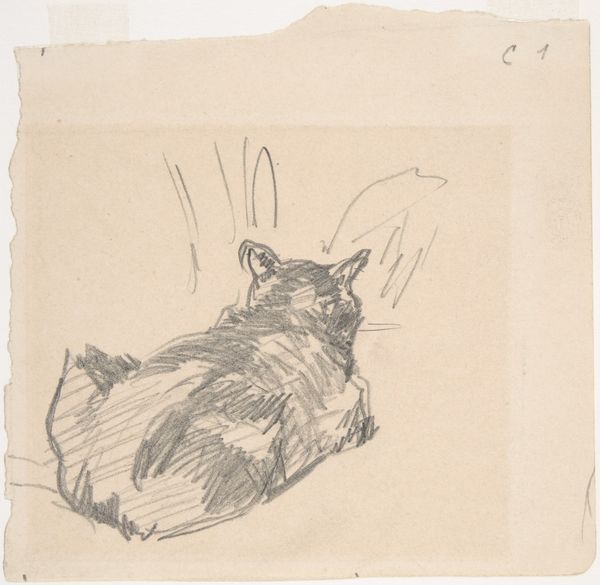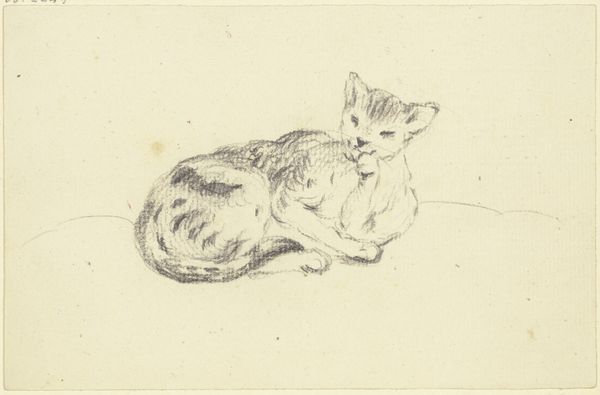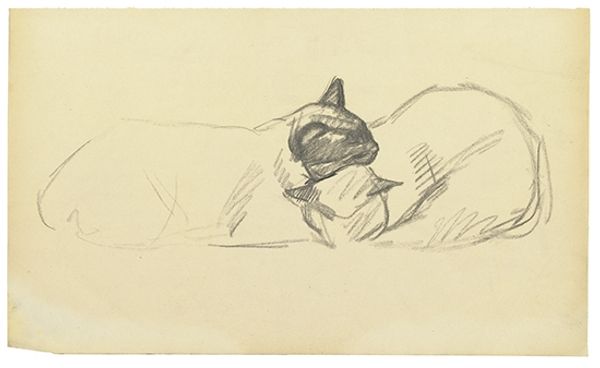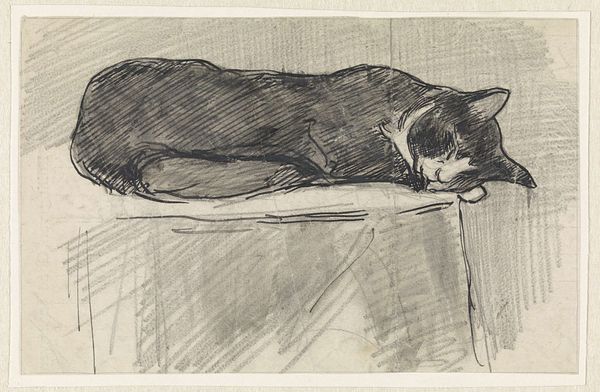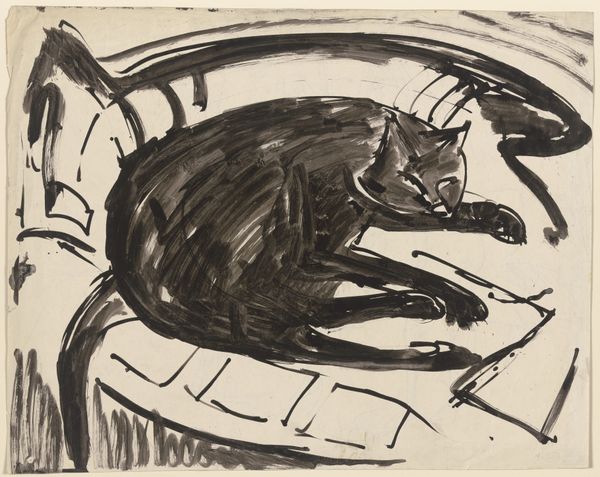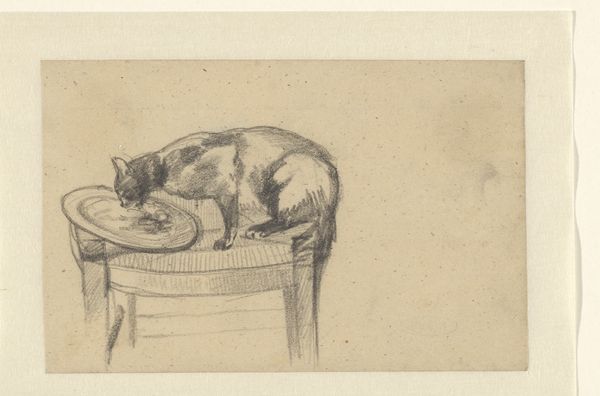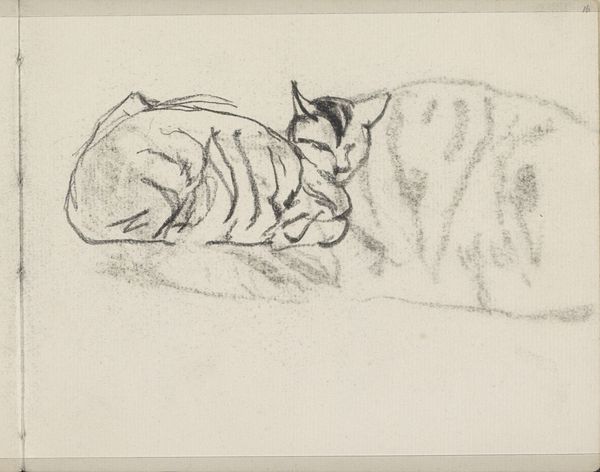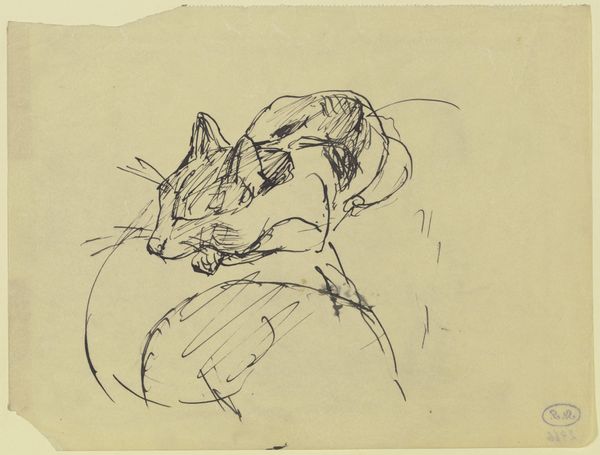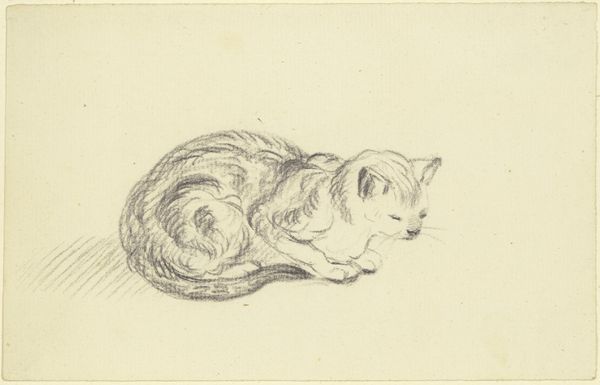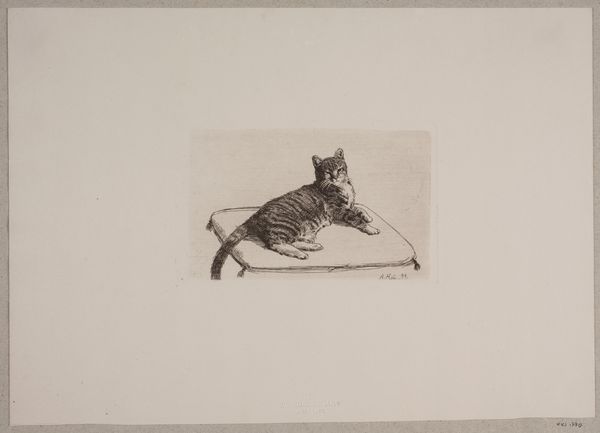
drawing, paper, ink
#
drawing
#
pen sketch
#
figuration
#
paper
#
personal sketchbook
#
ink
#
expressionism
Copyright: Public Domain
Editor: Here we have "Cat Lying on a Piece of Furniture," a pen and ink drawing from 1915 by Max Beckmann. The rapid, sketchy lines give it a sense of immediacy, but there’s also something melancholic about the composition. What symbols or motifs do you see present here? Curator: The most immediate symbol is, of course, the cat itself. Throughout history, cats have held myriad symbolic meanings – from representing domesticity and comfort to embodying independence and even a touch of the uncanny. Given that this was drawn in 1915, a time of immense upheaval with World War I raging, consider what that might signify. Editor: That's a great point; how would wartime influence Beckmann's image choice? Curator: Cats often symbolize a retreat from the outside world, a seeking of solace. Could this cat represent a desire to escape the horrors of war and find refuge in the familiar? Or perhaps even symbolize a fractured sense of home and comfort in a time when both were being challenged? Look also at the furniture it’s lying on—more sketched-in than defined. Does this vague depiction evoke a sense of impermanence, of things falling apart? Editor: It’s like the comfortable domestic space is threatened or dissolving, which mirrors the broader societal instability. I can see the parallels between the war context and personal psychological experience here. Curator: Exactly. Beckmann's Expressionist style allowed him to convey emotional states powerfully. Even something as seemingly simple as a cat becomes a vehicle for expressing complex feelings about a world in crisis. Editor: This quick sketch holds so much depth. I'm definitely going to view feline depictions in art with new eyes from now on. Curator: Indeed! And to consider the objects that provide context to that domestic space as part of a much larger social disruption. Art really can reveal layers of meaning we don’t immediately expect.
Comments
No comments
Be the first to comment and join the conversation on the ultimate creative platform.

